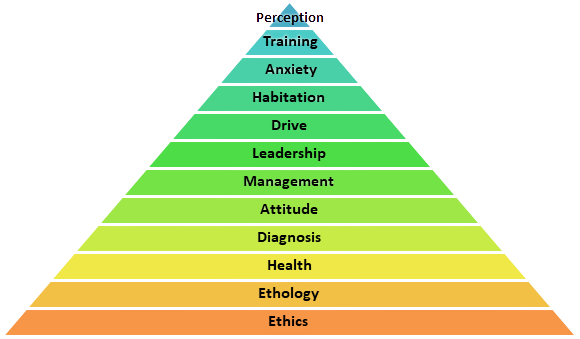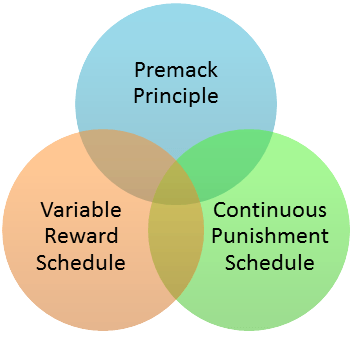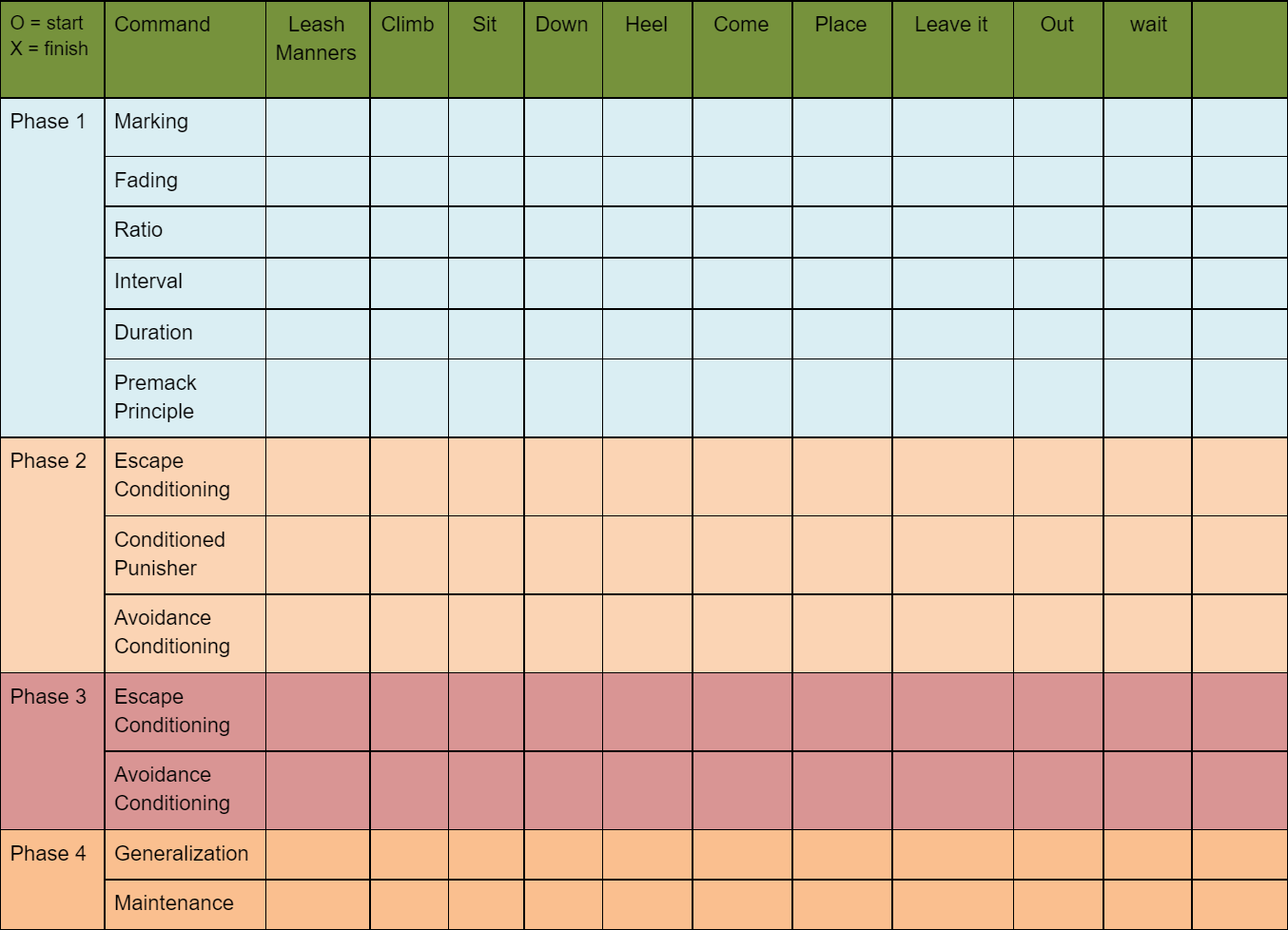BECOME a Foundation Style Dog Trainer.
FIND a Foundation Style Dog Trainer.
About K9-1 Specialized Dog Training LLC and FSDT
K9-1 Specialized Dog Training LLC was established in 1998. The mission of the company is to create modern dog training systems and guidelines to improve upon incomplete or non-existent models. This has been accomplished by mapping out the path to all aspects of dog behavior plans and training from the scientific, mechanical, and practical points of view. Done in this fashion, common problems in the field can be pinpointed, much like software error code, allowing trainers to address the underlying issues. K9-1 advises professional dog training organizations, government agencies, rescue organizations, and pet owners with these guidelines and systems.
What is Foundation Style Dog Training (FSDT)?
Foundation Style Dog Training relies heavily on understanding "foundation" information or adhering to "foundation" principals to be successful and humane at more advanced levels of training.
For example, if dog trainers desire to be humane and competent using aversives in their training, they should first be experts at using positive reinforcement based methods. With a good foundation of skills in positive reinforcement, the use of aversives in the teaching process can be reduced and more intelligently used when deemed appropriate.
Another example would be if dog trainers wish to create training plans to solve complex aggression problems for pet owners. The trainers should first be experts at understanding, through credible source material, the true behavior and motivations of the canine species. Then, trainers will be more successful at creating plans that work with mother nature vs just trying to suppress it.
Foundation Style Dog Training ultimately delivers very reliable results that are accomplished by using purposefully scientific, practical, and humane guidelines.
The Whole Plan
Foundation Style Dog Training streamlines training blueprints by prioritizing common denominators, which will lay the foundation for the success of many different behavior modification and training plans.
Feedback from the Foundation Style Dog Training Community is regularly used to update and improve upon training plans. These guidelines can only live by the trials and successes of many who help create the most current version. Currently K9-1 is teaching version 5.0 of Foundation Style Dog Training.

Built for Reliability
Liability is always an important concern when it comes to the performance of a working dog, and reliability often means the difference between life and death for a dog. When dealing with aggressive dogs, the prevention of injury to both people and other animals is a serious matter. Therefore, Foundation Style Dog Trainers utilize the best combination of scientifically proven reinforcement schedules and principles for both encouraging and discouraging behaviors. Used in conjunction, this produces the most scientifically reliable training possible for the demanding and ever-changing real-world environment.
Command Structure Optimization
Communication through a comprehensive, fair, and predictable command structure is essential to reap the full benefits of a proper handler/canine relationship. Missing pieces or sloppy command structures cause countless side-effects that may not be obvious in a controlled training environment, but will show up during live deployments, when the communication is needed most. Not only should a command structure clearly communicate the task, it should also incorporate scientific rules to obtain the highest possible reliability.
It is in the Training
Not only must the dog present well as a trained dog, but the process in which it is trained should include proper scientific principles taught in the correct order. If done correctly, the dog will have a smooth training experience and the handler will reap all the benefits of a confident and obedient dog.
Done in the wrong order, or without significant attention to the details, a finished dog will show side effects. This will limit the depth of understanding the dog has about the training and will ultimately affect the handler’s performance with the dog.
Quality control helps with the process of pinpointing side effects from skipped or incomplete training steps.
The Gold Standard
In an unregulated industry, where most trainers follow plans based on simple observational learning, “the school of hard knocks,” “being good with animals,” and various broken and ill-defined plans, Foundation Style Dog Trainers use rigorous standards that are usually only associated with applied behavior analysis in humans:
-
Applied: Training focuses on the social significance, in the real world, of the behavior being modified or created.
-
Behavioral: Training is practical; it asks how it is possible to get a dog to do something effectively? To answer this question, the behavior itself must be objectively measured.
-
Analytic: Training is successful when the trainer understands and can manipulate the events that control a target behavior. This may be relatively easy to do in theory or in an empty training room, where a trainer can arrange the relevant events, but it is not always easy, or ethical, in an applied situation. The effectiveness of the intervention is revealed by changes in just the behavior to which the intervention is being applied.
-
Technological: The description of a training plan must be clear and detailed so that any competent trainer can repeat it accurately. This is the standard way to check this: Have a trainer read the description and then act out the procedure in detail. If the trainer makes any mistakes or has to ask any questions, then the description needs improvement.
-
Conceptually Systematic: Dog training should not simply produce a list of effective interventions. Rather, to the extent possible, these methods should be grounded in behavioral principles. This is aided by the use of theoretically meaningful terms, such as "conditioned reinforcement" or "generalization" where appropriate.
-
Effective: Though training methods should be theoretically grounded, they must be effective. If an intervention does not produce a large enough effect for practical use, then the training has failed.
-
General: Training should aim for interventions that are generalizable; the methods should work in different environments, apply to more than one specific behavior, and have long-lasting effects.
-
Accountable: To be accountable means that a training outline must be able to demonstrate that it is effective. This requires repeatedly measuring the success of plans, and, if necessary, making changes that improve their effectiveness.
-
Published: The methods, results, and theoretical analyses of training plans must be published and open to scrutiny. There are no hidden treatments or mystical, metaphysical explanations. References and statistics should be used whenever possible.
-
Doable: To be generally useful, training plans should be available to a variety of individuals, who might be pet owners, working dog handlers, or animal shelter workers. With proper planning and training, many plans can be applied by almost anyone willing to invest the effort.
-
Empowering: Training plans should provide tools that give the trainer feedback on the results of interventions. These allow trainers to assess their skill level and build confidence in their effectiveness.
Foundation Style Dog Trainers are also skilled in:
- A specific and standardized style of handling leashes known as "leash ninja" which involves a "jerk-free" and "pressure-free" style of controlling the leash using a series of slides and leash locks that can be used for pets, aggression cases, and working dogs.
- A "jerk-free" and "pressure-free" style of using prong style collars in training known as "pumps" that reduces the degree of physical coercion needed in the training process.
- Scientifically accurate, precise and humane use of e-collars, which are compliant with the strict LIMA (least intrusive, minimally aversive) guidelines.
For those who choose to incorporate e-collars into their training plans, Foundation Style Dog Trainers can effectively reduced the use of the e-collar to less than 1% of the typical stimulation taught during the training process and maintenance by most mainstream, sport-based, and franchised dog training instruction.
Not only can Foundation Style Dog Trainer's guarantee this claim through record keeping, they can demonstrate equal or superior reliability of dogs trained and maintained through a LIMA compliant plan.
Help for an Unregulated Profession
The results of Foundation Style Dog Training guidelines and those who use them, have helped K9-1 become an influential advocate for the professional dog training industry. Through this community website, the future goals of the company are to increase the professionalism in the industry by exchanging knowledge and working together with other professionals to create a more regulated field that will benefit professionals, pet owners, and most importantly our four-legged companions.




